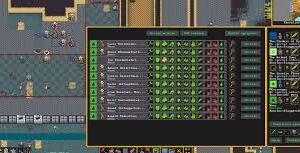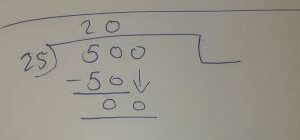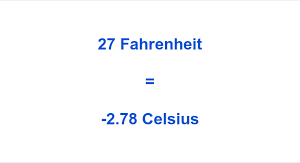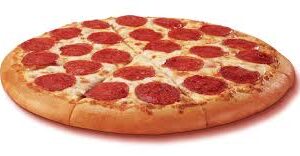Are 12 liters to cups you ready to dive into the world of measurements? Whether you’re a seasoned baker or just someone who wants to be able to convert liters to cups accurately, this blog post is for you! Understanding how different units of measurement relate to each other is an essential skill in the kitchen and beyond. In this article, we’ll explore everything you need to know about converting 12 liters to cups. So grab your measuring spoons and let’s get started on this exciting journey of culinary conversion!
Understanding the Measurement: What is a Liter and a Cup?
Understanding the Measurement: What is a Liter and a Cup?
When it comes to cooking and baking, precision is key. And that’s where measurements come into play. Two commonly used units of measurement in the culinary world are liters and cups.
A liter, denoted by “L” or sometimes “l”, is a unit of volume in the metric system. It is equal to 1,000 milliliters or about 33.8 fluid ounces. So if you have a liter of water, you essentially have just over four cups worth!
On the other hand, a cup is an imperial unit of volume primarily used in the United States for both liquid and dry ingredients. One cup equals approximately 240 milliliters or eight fluid ounces.
It’s essential to understand these measurements because different recipes may call for either liters or cups as their preferred unit of measurement. Knowing how they relate to each other allows you to accurately follow recipes without any confusion.
So next time you’re whipping up a batch of cookies or preparing some soup, keep these measurements in mind! They’ll help ensure your culinary creations turn out just right.
The Importance of Converting Measurements
The Importance of Converting Measurements
Accurate measurement conversion is crucial in various aspects of our daily lives. Whether you’re cooking, baking, or working on a DIY project, understanding how to convert measurements ensures precision and successful outcomes.
Converting measurements allows us to follow recipes and instructions accurately. Imagine trying to bake a cake without knowing the correct conversion from liters to cups for the ingredients! It could lead to disastrous results – an overly moist or dry cake that just doesn’t taste right.
Not only does converting measurements help with recipe success, but it also promotes consistency. If you’re following a specific diet plan or tracking nutritional intake, knowing precise conversions is essential. For example, if your meal plan specifies 12 liters of water per day but you’re unsure about how much that translates into cups, you might unintentionally consume less than required.
In addition to culinary endeavors and health-related matters, accurate measurement conversions are vital in construction and engineering projects as well. A slight miscalculation can have significant consequences when building structures – something no one wants!
Mastering measurement conversions equips us with the knowledge needed for seamless execution in various areas of life. It saves time by eliminating guesswork and ensures consistent results every time we embark on a new project or venture into uncharted recipes
How to Convert 12 Liters to Cups
When it comes to converting measurements, it’s important to have the right tools and techniques at your disposal. If you find yourself needing to convert 12 liters to cups, don’t worry – I’ve got you covered.
First, let’s understand the difference between a liter and a cup. A liter is a unit of volume in the metric system, commonly used for measuring liquids. On the other hand, a cup is an imperial unit of volume primarily used in cooking and baking.
To convert liters to cups, you need to know that there are approximately 4.22675 cups in one liter. Armed with this knowledge, you can easily calculate how many cups make up 12 liters by multiplying this conversion factor by 12.
So, if we do the math: 4.22675 x 12 = 50.721 cups (approximately).
Now that you know how to convert 12 liters to cups accurately let’s discuss some common mistakes people make during measurement conversions.
One mistake is forgetting or misplacing decimal points when performing calculations, which can lead to significant discrepancies in your final result. It’s crucial always double-check your work before relying on it.
Another error often made is using incorrect conversion factors or formulas for different measurement systems such as metric and imperial units. To avoid confusion and inaccuracies, ensure that you’re using consistent units throughout your calculation process.
In addition to these tips for accurate measurement conversion keep in mind that having access
to reliable conversion charts or online converters can be incredibly helpful when dealing
with complex or unfamiliar conversions
Remember – practice makes perfect! With time and experience,
you’ll become more confident with measurement conversions overall.
Common Mistakes to Avoid When Converting Measurements
When it comes to converting measurements, there can be some common mistakes that people often make. These mistakes can lead to inaccurate conversions and ultimately affect the outcome of a recipe or project. Here are a few common mistakes to avoid when converting measurements:
1. Using the wrong conversion factor: One of the most common mistakes is using an incorrect conversion factor. It’s important to double-check and ensure that you’re using the correct ratio when converting from liters to cups.
2. Not accounting for different measurement systems: Another mistake is not considering that different countries may use different measurement systems. For example, in some countries, a cup may refer to 250 milliliters while in others it may refer to 240 milliliters.
3. Rounding errors: Rounding numbers during conversions can also lead to inaccuracies. It’s best practice to carry out calculations with decimal points before rounding off, especially when dealing with large quantities.
4. Confusing volume and weight measurements: Converting between volume and weight measurements requires a separate set of conversion factors altogether, so it’s crucial not to mix them up.
5.
Omitting units: Leaving out units during conversions can cause confusion and potentially result in incorrect measurements.
To avoid these common mistakes, take your time when converting measurements and always double-check your work for accuracy. Remember that precision is key when it comes to getting accurate results in any recipe or project involving measurement conversions!
Tips for Accurate Measurement Conversion
Tips for Accurate Measurement Conversion
Converting measurements can sometimes be a tricky task, but with the right tips and techniques, you can ensure accurate results. Here are some helpful tips to keep in mind when converting measurements:
1. Understand the conversion factor: Each unit of measurement has its own conversion factor. For example, one liter is equal to 4.22675 cups. Knowing these conversion factors will make your calculations much easier.
2. Use reliable sources: When converting measurements, it’s important to use reliable sources such as reputable websites or trusted reference books. This will help you avoid any potential errors or inaccuracies.
3. Double-check your calculations: Even if you’re using a calculator or an online conversion tool, it’s always a good idea to double-check your calculations manually. This extra step can help catch any mistakes that may have been made during the conversion process.
4. Round appropriately: Depending on the level of precision required, you may need to round your converted measurement to a certain number of decimal places or significant figures.
5. Practice with everyday objects: To improve your measurement conversion skills, try practicing with everyday objects around your home. For example, measure out different amounts of liquid using both liters and cups and then convert between the two units.
6. Familiarize yourself with common conversions: While knowing how to convert liters to cups is useful, it’s also beneficial to familiarize yourself with other common conversions such as ounces to grams or inches to centimeters.
By following these tips for accurate measurement conversion, you’ll be able to confidently convert 12 liters into cups without any confusion or errors!
Other Helpful Conversion Calculations
When it comes to measurement conversions, there are many calculations that can come in handy. While we’ve already discussed how to convert 12 liters to cups, there may be other conversion calculations you find useful in your everyday life.
For example, if you’re baking and the recipe calls for milliliters instead of teaspoons or tablespoons, knowing how to convert between the two can save you from a culinary disaster. Similarly, if you’re planning a road trip and need to know how many kilometers are in a mile, being able to make this conversion will help ensure you don’t get lost along the way.
Another helpful calculation is converting pounds into kilograms or vice versa. This is particularly useful when trying to determine weight measurements for things like luggage at the airport or ingredients for cooking.
In addition to these common conversions, there are also less frequently used ones that can still come in handy. For instance, understanding how to convert Fahrenheit temperatures into Celsius or vice versa is helpful when traveling internationally or when reading weather forecasts from different regions.
Having a grasp on various conversion calculations can make your life easier and more efficient. Whether it’s converting measurements for cooking or understanding different units of temperature or weight, these skills will serve you well in numerous situations. So next time you encounter an unfamiliar unit of measurement, don’t panic – just remember that with some basic math skills and a little practice, any conversion is within reach!
Conclusion
Conclusion
Understanding and converting measurements is an essential skill for anyone who spends time in the kitchen. In this article, we have explored the conversion of 12 liters to cups and provided tips to ensure accuracy in measurement conversions.
By now, you should have a clearer understanding of what a liter and a cup are and why it is important to convert between these units. Remember that 1 liter is equal to approximately 4.227 cups, so when converting 12 liters to cups, you would multiply by this conversion factor.
When converting measurements, it’s crucial to avoid common mistakes such as using incorrect conversion factors or forgetting to double-check your calculations. Taking your time and being mindful of these potential errors will lead to more accurate results.
To improve your measurement conversion skills further, consider practicing with other common conversions like ounces to grams or pints to milliliters. There are numerous online tools and resources available that can help simplify the process for you.
In conclusion (Oops! I mean), To sum up, mastering measurement conversions not only enhances your cooking abilities but also allows you to follow recipes accurately. So next time you come across a recipe calling for 12 liters of liquid ingredients, rest assured that converting it into cups won’t be an overwhelming task!
Happy cooking and precise measuring!










